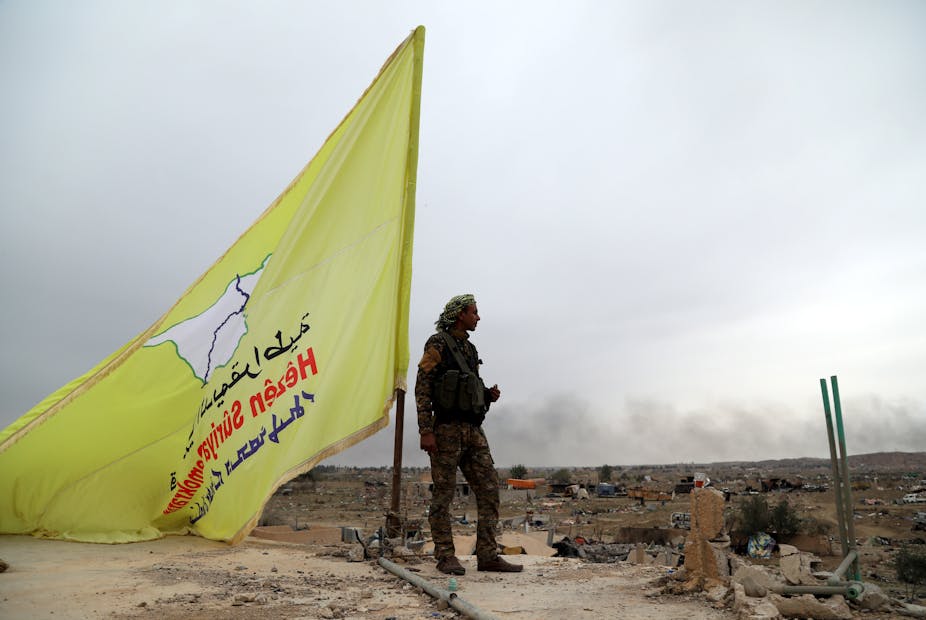In a move likely to further destabilise the situation in Syria and the Middle East, Donald Trump appeared to give Turkey the green light on October 6 for a military operation into northern Syria. The area is currently controlled by the Syrian Democratic Forces, led by the Kurdish People’s Protection Units, or YPG, who the US worked closely with in the battle to defeat Islamic State (IS). Kurdish forces described Trump’s decision to pull US troops out of the area as a “stab in the back”.
Amid mounting criticism of the decision, Trump seemed to pull back, taking to Twitter to warn Turkey not to go too far in its operation. US security officials insisted the administration did not endorse or support the Turkish operation. However, Turkey said its preparations were complete for the military campaign, which aims to establish a “safe zone” along the Turkish-Syria border.
Trump’s decision to withdraw troops appeared to be underlined by his dissatisfaction with European allies who haven’t taken back their citizens from the region. The White House said, it wanted to avoid spending more money from American taxpayers on holding captured IS fighters. During a phone conversation with Recep Tayyip Erdoğan, Trump reportedly agreed with the Turkish president that Turkey would take charge of these captured fighters.
Relations between Turkey and the US have long been strained by American support for Kurdish fighters in Syria. Turkey believes they are directly connected to the PKK, a Kurdish separatist group recognised as a terrorist organisation by Turkey, the US, and the European Union.
Yet Turkey could find itself in a quagmire that involves a guerrilla warfare waged by the Kurdish forces. According to the Anatolian Agency, Turkey’s official news agency, the PKK is already present in northern Syria. If Turkey goes ahead with a campaign, it will extend the 40-year long conflict between the Turkish military, NATO’s second biggest army, and the PKK beyond Turkey’s borders. However, unlike in previous decades, the PKK will be backed by the YPG, long trained in active combat.

Assad’s next move
It’s unclear how Bashar al Assad and his regime in Damascus will react to a planned Turkish incursion into northern Syria. One possibility is that Assad government forces, backed by Russia, could take advantage of the situation and advance from the south into the Kurdish region. This will force the Kurds to fight on two fronts at the same time – something they are unlikely to survive.
There is another possibility. If the Kurdish political forces are successful in negotiating a deal with Damascus to set up a federal government system, like in Iraq, in Syria, these two forces could unite against the “foreign invader”. Speaking at the UN General Assembly in September, the Syrian foreign minister, Walid al-Moallem, already called for the withdrawal of American and Turkish forces in Syria.
Some Kurdish militia in northern Iraq could also join the YPG in a future conflict against Turkey. In March 2019, the Patriotic Union of Kurdistan from Iraq announced its potential support in case of an attack. Such moves would likely disturb stability in northern Iraq, which has had amicable relations with Turkey.
Fate of refugees
The Kurdish region in northern Syria, also known as Rojova, has been one of the most stable in the country throughout the Syrian war. It has provided shelter to those who escaped from IS, Assad forces, and extremist factions within the Free Syrian Army, such as Al Qaeda affiliates.
The destabilisation of the region will likely trigger a new wave of migration from Syria towards northern Iraq and potentially Turkey. Since an informal agreement between the US and Turkey in August to create safe zones in northern Syria, tens of thousands have already fled from Idlib to the Turkish border anticipating a new conflict in the region.
Read more: Syria safe zones: what is driving the unexpected rapprochement between the US and Turkey?
Turkey, which currently hosts more than 3m Syrian refugees, has recently introduced stricter policies and regulations that aim to return some of these refugees to Syria. Erdoğan plans to repatriate them to any safe zone it manages to set up, so it’s unlikely Turkey will accept and host new waves of refugees from Syria. Stuck between a rock and a hard place, refugees will be forced to take irregular migration channels to Europe via Turkey and north Africa.
Russia’s next move is also crucial. The Kremlin, which recognises Turkey’s right to defend itself, also emphasises the need to protect Syria’s “territorial integrity”. Russia has been careful not to alienate the Kurds in Syria completely.
If the Kurds, who feel betrayed and abandoned by the US, move closer to Russia as a guarantor of their autonomy in a federal Syria, this could play in to the Americans’ hands by threatening the growing rapprochement between Turkey and Russia. However, a post-war Syria with a federal system that includes the Kurds and a consolidated Assad regime could strengthen the Russia-Iran bloc in the region, which will disturb both Israel and Saudi Arabia, crucial partners and allies of the US.
The next few weeks and months will determine the fate of Rojova, which will be pressured by both Turkish and Assad forces. Alongside the Kurds, the ethnic and religious groups, such as the Assyrians and Yazidis, who have found shelter in Rojova, will go through a dangerous period. And the cells of defeated IS fighters will be waiting for the opportunity derived from this crisis.

